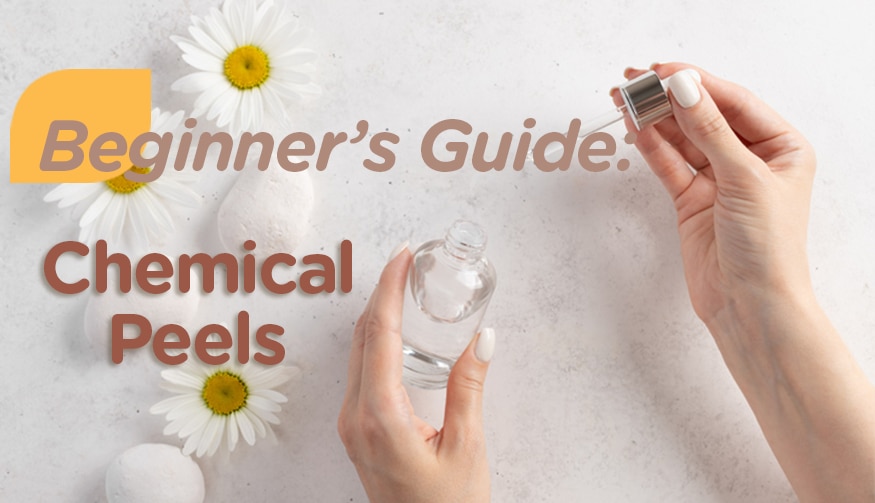What is a chemical peel?
A chemical peel* is a higher strength version of exfoliating with a pH that’s generally around 2.0. It can be used to improve the appearance and texture of the skin by dissolving dead-skin buildups, stubborn grime and excess oil which make your skin look dull. (Believe me, you will love your renewed and glowing skin after a chemical peel.)
If you are choosing a chemical peel product, look for one which pH is at 2.0 or below for the highest efficiency. Products with pH higher than 2.0, even with the same percentage of acid, will be less active.
With more and more of us starting to focus on self-care in this challenging time, why not make taking good care of your skin one of your new year’s resolution? While you may need to stay out of the sun after a chemical peel for recovery, what could be a better timing when you are staying at home more often than ever now?

What does a chemical peel do to your skin?
In general, chemical peels gentler than physical exfoliation, with the latter being possibly abrasive to your skin. A chemical peel can also give you a more even exfoliation to your complexion.
It may be used to improve or treat:
- Appearance of acne scars
- Sun damage, including age spots and fine wrinkles
- Skin texture
- Hyperpigmentation and dark spots
Depth of chemical peels
In terms of strength, there are three varieties:
Light peel
You may experience a slight stinging feeling when a light peel is applied on your skin. It exfoliates gently and is best suited for mild skin problems like minor discoloration or rough texture.
Almost no downtime is required after a light peel. Most at-home chemical peel falls into the category of light peel.
Examples: Mandelic, lactic, and low-strength salicylic acid
Medium peel
This penetrates more deeply and is typically administered in a physician’s office, normally requiring almost a week for recovery, while redness might persist for months.
It can be used to target moderate skin problems like superficial scarring, fine lines and wrinkles, and pigmentation issues like melasma or age spots.
Examples: High-percentage glycolic acid, and trichloroacetic acid
Deep peel
This penetrates even deeper in the dermis and thus is able to address more advanced skin issues, such as severe scarring, deep wrinkles, and skin discoloration. It is regarded as an aggressive and intensive treatment, and because of the enormous pain it causes it is often done under anaesthesia.
Deep chemical peels will cause severe swelling and redness, with burning or throbbing sensations.
Both medium and deep peel requires extreme caution, they must be performed by a trained and experienced professional. DO NOT do a deep peel at home.
Examples: High-percentage TCA and phenol chemical peels
At-Home chemical peel
Whereas medium and deep chemical peels are confined to dermatology clinics and specialist medi-spas, light peel can be used as your at-home substitution. It is suggested to perform a chemical peel at home once a week or once every two weeks at most. It’s important not to overdo it or you will weaken your skin-barrier function and trigger inflammation.
Types of common acids for at-home chemical peel:
- Water-soluble acids to even out skin tone, improve discolouration & improve skin texture:
AHAs (alpha-hydroxy-acids), e.g. glycolic, lactic and malic acids - Oil-soluble acids to unclog pores & combat acne:
BHAs (beta-hydroxy-acids), e.g. salicylic acid
How to do a chemical peel at-home
It’s important to follow the instructions on the label of the product you are using. Be sure to do a patch test to the skin below your ear along your jawline. Wait 24 hours to see how your skin reacts.
- Wash your face before applying a chemical peel.
- Apply an even coat of the chemical peel solution to your skin.
- Do not leave the peel product on your skin longer than instructed, so as to prevent possible burns.
* Seeking professional advice from your dermatologist if you have any concerns or questions.
Chemical peel after-care
















